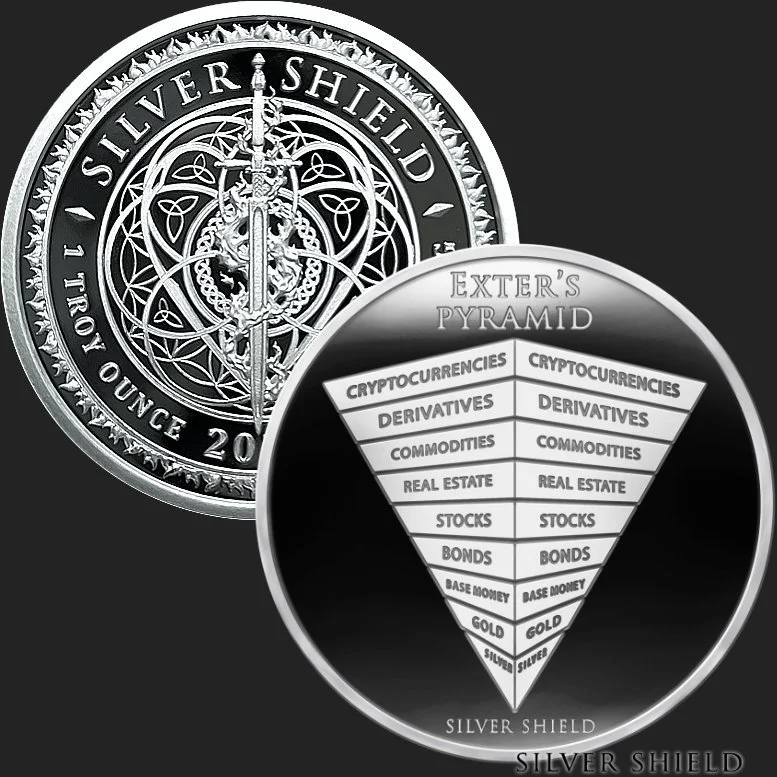Decoding Exter's Pyramid: Understanding Risk and Liquidity in Finance
John Exter, Economist
Anyone involved in the fields of finance, or economics, IS familiar with Exter’s Pyramid.
But many do not know much about the man, named John Exter, who devised this simple representation of the inherent risks and liquidity within certain class assets.
Interestingly, Mr. Exter’s birthplace, parents and early life seems to be shrouded in mystery as there is little to nothing about his life prior to his attending college. Although it may be surmised that he was born in Massachusetts as he was a long-time member of the Pilgrims of the United States.
What we do know about Mr. Exter is that he was born in the United States on September 17, 1910. He attended the College of Wooster in Wooster, Ohio, and upon graduation in 1932, he did post-graduate work at The Fletcher School of Law and Diplomacy in Medford, Massachusetts. In 1939 he attended Harvard University in Cambridge, Massachusetts and completed his graduate work in economics.
As an adult, he lived through the Stock Market of 1929 and The Great Depression, both of which defined his conservative views on finance and the economy. He believed that economic prosperity could not be attained by printing more money and he was in many cases the sole voice in opposition to the Keynesian view which espoused deficit financing as a way to produce full employment. He firmly believed that printing more money than the country’s gold reserves could back, would backfire.
During World War II (1939-1945) John Exter was employed for a short time at Massachusetts Institute of Technology (MIT). He then joined the Board of Governors of the Federal Reserve as an economist. As he witnessed the credit-driven expansion that arose after WWII, Exter created his inverted pyramid in order to visually show how best to manage financial risks, including the liquidity, or illiquidity, of most asset classes. This illustration shows the highest liquidity and least risky assets at the bottom of the pyramid, which are gold and silver. Mr. Exeter placed the least liquid and riskiest assets at the top of the inverted pyramid, asserting they include, “anyone or anything that can’t repay the debt.”
In 1948, Mr. Exter was on loan to the Government of the Philippines as their Secretary of Finance in order to establish their banking system. His next assignment was to Ceylon (Sri Lanka) where he helped establish its central bank becoming their first Governor of their Central Bank serving from 1950 to 1953.
In 1953, he joined the World Bank and was appointed division chief for the Middle East at the International Bank for Reconstruction and Development. Mr. Exter returned to the Federal Reserve System in 1954 as Vice President of International Affairs, which included banking and precious metals operations.
In 1959, Mr. Exter left the Federal Reserve for the last time and joined the largest bank in America, the First National City Bank, which later became Citibank. In 1960, he was promoted to Senior Vice President in charge of the bank’s relationships with foreign central banks and foreign governments.
In 1971, when his prognostications proved correct due to the over-printing of money, the dollar became unstable. This caused the USA to abandon the gold standard and during the resulting rush to gold, all of Mr. Exter’s personal gold assets doubled in value. Mr. Exter retired the following year and began a private consulting firm.
Although John Exter’s influence during his life as a revered economist has had long-term, and productive ramifications within the banking industry, he is best remembered for Exter’s Pyramid, which has proven to be an invaluable tool for investors.
He and his wife Marion had four children and Mr. Exeter died on February 28th, 2006 at the age of 95.
Other 2025 Silver Shield Proof Round releases




























